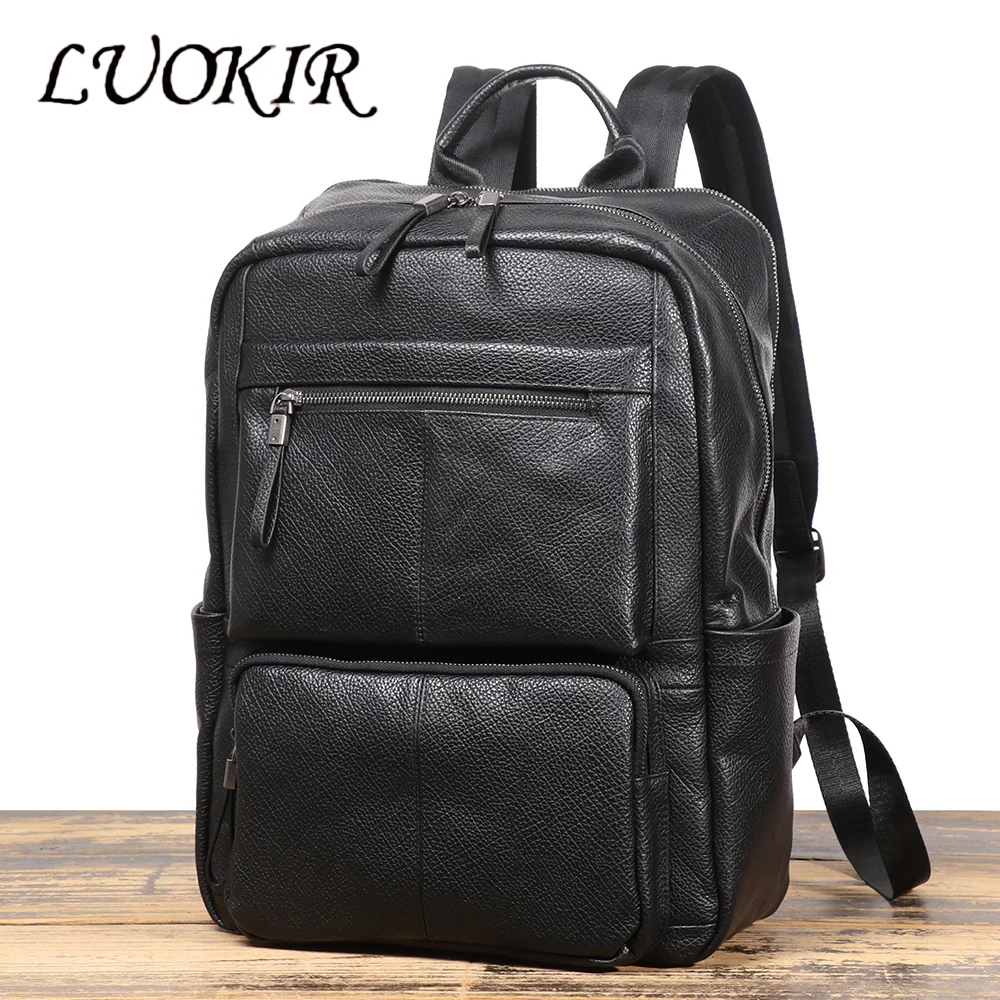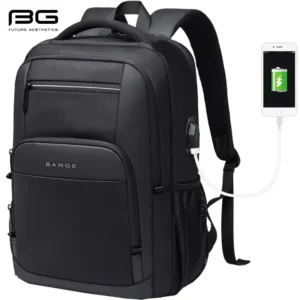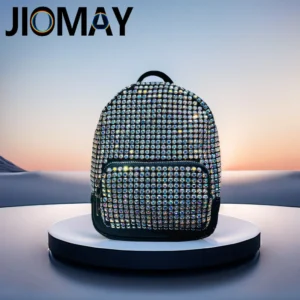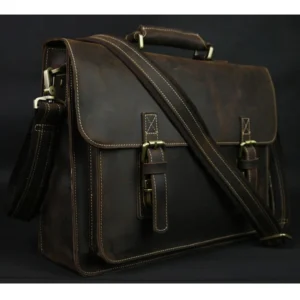Understanding Leather Basics: What Makes Quality Leather
Leather is simply animal hide that has been processed to make it more durable, flexible, and resistant to decay. But not all leather is created equal, and understanding the differences can save you from disappointing purchases and help you invest in items that truly last.
When shopping for leather goods, you’ll often encounter terms like “full grain” and “top grain.” It’s important to know that these aren’t quality grades, but rather descriptions of which part of the animal hide was used to make the leather. These different types come from specific layers of the hide, each with unique characteristics that affect everything from durability to appearance.
The type of leather used in a product dramatically impacts how long it will last and how it will age over time. Historically, quality leather goods were considered investments – items passed down through generations rather than replaced every few years. This tradition continues today, with the finest leather types for durable bags still being sought after for their longevity.
Understanding the differences between leather types helps you make smarter purchasing decisions, especially when investing in premium items like luxury leather backpacks. While marketing terms can sometimes be confusing, learning about the actual grades of leather will equip you to recognize true quality when you see it.
How Leather is Made: Understanding the Hide Layers
Before diving into the differences between leather types, it’s helpful to understand the structure of animal hide and how it’s transformed into leather.
Animal hide consists of several distinct layers. From top to bottom:
- Epidermis – The outer protective layer with hair follicles (removed during processing)
- Grain layer – The dense, tightly packed fiber layer directly beneath the epidermis
- Corium (or dermis) – The thicker, looser fiber structure below the grain
- Flesh layer – The innermost layer attached to the animal’s body (removed during processing)
The basic leather-making process involves several steps:
- Curing and preservation – Preventing decay immediately after the hide is removed
- Soaking and liming – Rehydrating the hide and removing hair
- Splitting – Dividing the hide horizontally into layers of appropriate thickness
- Tanning – Using natural or chemical processes to permanently stabilize the hide
- Finishing – Various treatments applied to enhance appearance and performance
The most important distinction to understand is that different leather types come from different layers of the hide. Full grain leather uses the intact top grain layer with its natural surface, while top grain leather uses the same layer but with the very uppermost portion removed. Other lower-quality leathers use the split layers from deeper within the hide.
These distinctions form the foundation of leather quality and explain why certain leathers have significantly different properties and lifespans. Understanding these differences is essential when choosing durable leather bags that will serve you well for years.
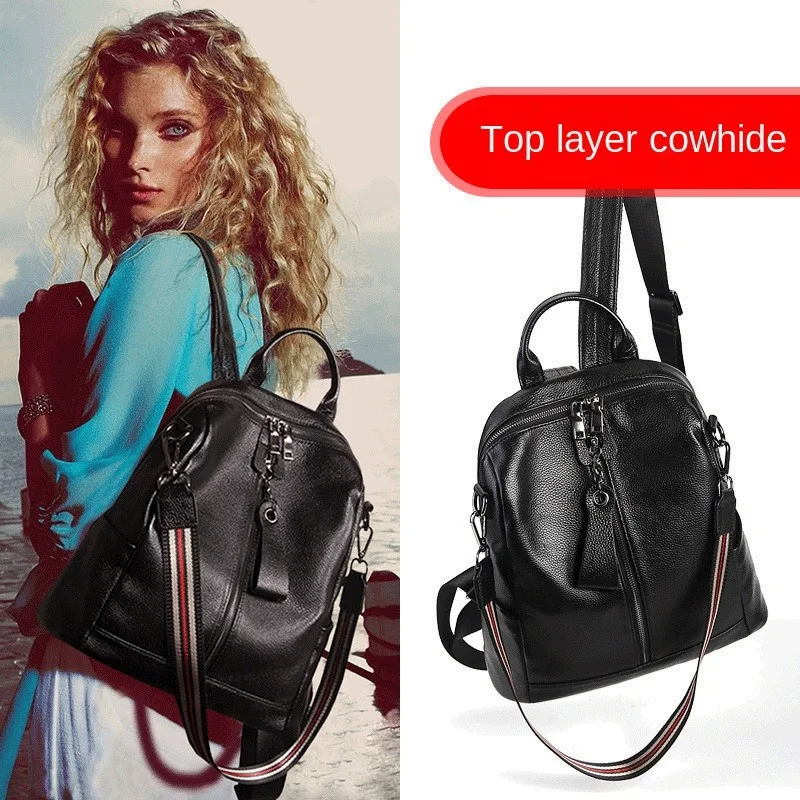
What is Full Grain Leather? The Premium Choice
Full grain leather represents the pinnacle of leather quality. It comes from the outermost portion of the hide, just below the hair, and includes the complete grain layer with all its natural characteristics intact. What makes full grain special is what isn’t done to it – the surface isn’t sanded, buffed, or altered to remove natural imperfections.
The processing of full grain leather is minimal, focusing on:
– Removing hair and cleaning the surface
– Preserving natural grain patterns and markings
– Tanning for stability and longevity
– Light conditioning and finishing
Key characteristics that distinguish full grain leather include:
- Visible natural markings – Including insect bites, small scars, wrinkles, and growth lines
- Visible pores – The natural pore structure remains visible on the surface
- Unique grain patterns – Each piece has distinctive, natural grain variations
- Firm yet supple feel – Often stiffer initially but develops incredible softness over time
- Rich, deep color variations – Takes dyes beautifully but maintains natural depth and character
Full grain leather is considered the highest quality for several compelling reasons. Its intact fiber structure provides unmatched strength and durability. The natural grain acts as a protective barrier against moisture and wear. Perhaps most importantly, full grain leather develops a beautiful patina over time, growing more attractive with use instead of simply wearing out.
When examining genuine full grain leather, look for visible pores, natural variations in the surface, and a rich depth to the color that can’t be imitated. This premium material is often featured in high-quality full-grain leather backpacks designed to last for decades.
What is Top Grain Leather? The Popular Middle Ground
Top grain leather is the second highest quality leather available, coming from the same outer portion of the hide as full grain but with a critical difference: the very uppermost layer has been sanded or buffed away. This process removes natural imperfections and creates a more uniform surface.
The processing of top grain leather typically involves:
– Sanding or buffing the natural grain surface
– Removing imperfections and irregularities
– Applying finishes, pigments, or embossing patterns
– Creating a more consistent appearance and feel
Key characteristics of top grain leather include:
- Smoother, more uniform surface – Free from most natural markings
- Less visible pores – Natural pore structure is diminished or concealed
- Consistent texture – Often has an artificially uniform grain pattern
- Immediate suppleness – Usually more flexible from the start than full grain
- Even coloration – Takes dyes very uniformly for consistent color
This processing significantly affects the leather’s properties. By removing the densest, strongest part of the hide, top grain sacrifices some durability for improved aesthetics and consistency. The added finishes often create a protective layer that increases stain resistance but reduces breathability and the leather’s ability to develop a natural patina.
Top grain leather’s popularity stems from its balance of quality and consistency. It offers much better durability than lower-grade leathers while providing a more uniform appearance than full grain. This makes it appealing for products where consistent aesthetics are important.
Many consumers are confused about leather terminology, wondering if 100% leather means full grain. In reality, genuine leather can refer to any layer of the hide, making understanding these distinctions essential for informed shopping.
Full Grain vs Top Grain: Durability and Longevity
When it comes to durability and longevity, the difference between full grain and top grain leather becomes most apparent:
Full Grain Durability
Full grain leather’s superior durability comes from its intact natural fiber structure. The grain layer contains the densest, most tightly packed fibers in the entire hide, creating a naturally strong material that resists:
- Tearing and puncturing – The tight fiber weave provides excellent tensile strength
- Abrasion and wear – The natural grain surface withstands friction better than processed surfaces
- Moisture damage – Natural oils and the intact grain layer provide better water resistance
- Stretching and deformation – Maintains shape better over extended use
With proper care, full grain leather items regularly last decades or even generations. As the leather ages, it develops a protective patina that further enhances its durability. This makes full grain leather better for backpacks and other heavily used items that need to withstand daily wear and tear.
Top Grain Durability
Top grain leather, while still durable compared to lower-quality leathers, has compromised strength due to the removal of the uppermost grain layer:
- Reduced tear resistance – The sanding process removes some of the strongest fibers
- Less abrasion resistance – Applied finishes wear away over time, exposing less protected leather beneath
- More susceptible to stretching – Often stretches more readily with regular use
- Surface damage vulnerability – Finishes can crack, chip or peel with age and use
Top grain leather typically has a lifespan of 5-15 years with regular use, compared to the 20+ years often seen with full grain leather. However, its durability is still sufficient for many applications, especially those where the item isn’t subjected to heavy daily stress.
The difference becomes evident when examining vintage leather backpacks – those made from full grain leather often remain functional and develop character, while top grain items typically show wear in a way that looks damaged rather than enhanced.
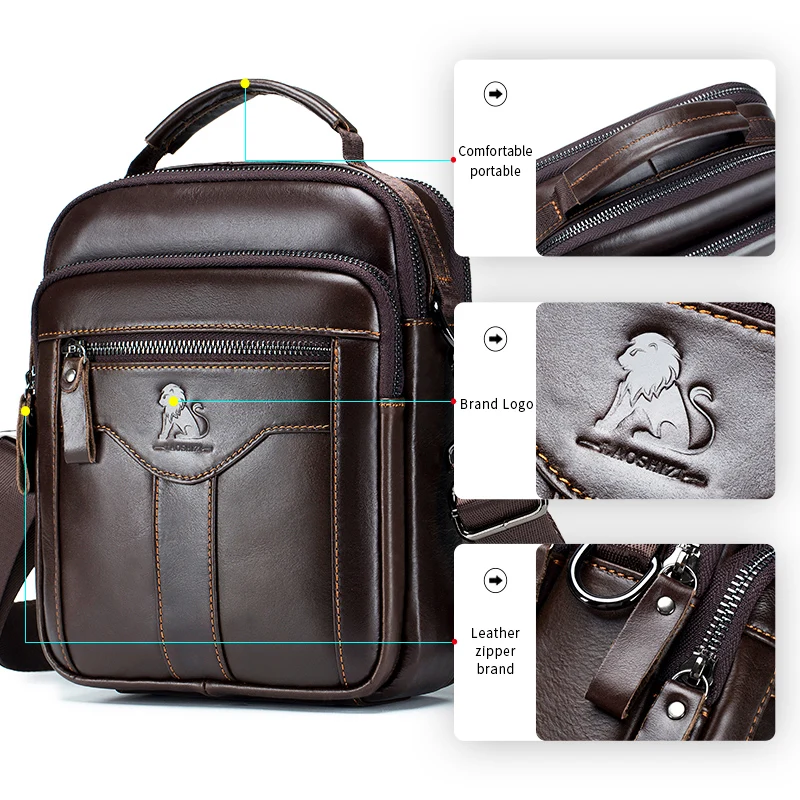
Aesthetic Appeal: How Each Leather Type Looks and Ages
The visual differences between full grain and top grain leather are striking both when new and as they age over time:
Full Grain Aesthetics
Full grain leather begins with a natural, somewhat imperfect appearance:
– Visible natural markings like insect bites, small scars, and growth lines
– Subtle variations in color and texture across the surface
– Visible natural pore structure
– Often a slightly less refined initial appearance
The true magic of full grain leather emerges over time. With use, it develops a patina – a natural luster and deepening of color that makes each piece uniquely beautiful. This aging process enhances rather than degrades the leather:
– Colors deepen and become richer
– The surface develops a natural shine from handling
– The leather becomes more supple and develops character
– Scratches and wear blend into the overall patina rather than standing out as damage
Top Grain Aesthetics
Top grain leather starts with a more refined, uniform appearance:
– Smooth, consistent surface free from most natural markings
– Even coloration throughout
– Often a more “perfect” initial appearance
– Sometimes embossed with an artificial grain pattern to mimic natural leather
However, top grain typically doesn’t age as gracefully:
– Colors may fade rather than deepen
– Surface finishes can wear away unevenly
– Wear patterns tend to look more like damage than character
– Scratches and scuffs often remain visible rather than blending in
The aesthetic trade-off is clear: full grain offers more character and improves with age, while top grain offers more consistency but typically shows more obvious signs of wear over time. Proper leather conditioning and waterproofing can enhance the appearance of both types, but can’t fundamentally change how they age.
For those who appreciate the way leather develops character over time, brown leather backpacks in full grain leather offer some of the most beautiful patina development.
The Feel Factor: Texture and Tactile Differences
The tactile experience of leather is just as important as its appearance, and the differences between full grain and top grain are immediately noticeable to the touch:
Full Grain Feel
Full grain leather typically has a distinctive tactile character:
– Initially firmer and sometimes stiffer to the touch
– Natural variations in texture across the surface
– Slightly textured rather than completely smooth
– Warms quickly to body temperature when touched
– Becomes increasingly supple with use without losing structure
Over time, full grain leather develops an incredibly soft, pliable feel while maintaining structural integrity. This breaking-in process creates a material that conforms to the user, like a well-worn baseball glove or favorite pair of boots.
Top Grain Feel
Top grain leather offers a different tactile experience:
– Often softer and more supple from the beginning
– More consistent, uniform texture throughout
– Smoother surface with less natural variation
– Sometimes has a slightly plastic-like feel due to surface finishes
– Maintains consistent feel throughout its life
The breathability difference between these leather types is also notable. Full grain leather allows more air exchange, wicking away moisture and adapting to temperature changes. Top grain leather, with its sealed surface, tends to feel less breathable and may not regulate temperature as effectively.
While full grain’s initial stiffness is sometimes considered among the disadvantages of full grain leather, many leather enthusiasts view this break-in period as an essential part of developing a personal connection with a leather item.
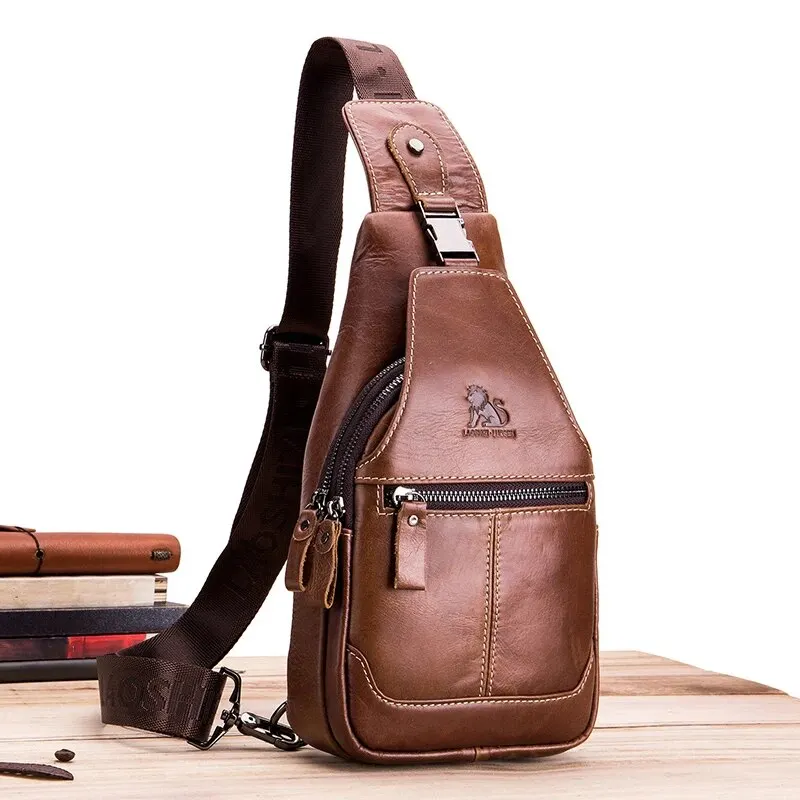
Performance Factors: A Comprehensive Comparison Table
| Performance Factor | Full Grain Leather | Top Grain Leather |
|---|---|---|
| Durability | ★★★★★ Superior strength with intact natural fibers | ★★★★☆ Good strength but compromised by surface processing |
| Water Resistance | ★★★★☆ Natural oils provide good resistance; can be improved with treatment | ★★★★★ Surface finishes typically provide better initial water resistance |
| Stain Resistance | ★★★☆☆ More prone to staining due to natural porosity | ★★★★★ Applied finishes provide better stain protection |
| Breathability | ★★★★★ Natural pores allow excellent air exchange | ★★☆☆☆ Reduced by surface treatments and finishes |
| Flexibility | ★★★☆☆ Initially stiff but becomes supple with use | ★★★★★ Typically more flexible from the beginning |
| Scratch Resistance | ★★★☆☆ Shows scratches but they often blend into patina | ★★★★☆ Protective finishes resist minor scratches |
| Maintenance Required | ★★☆☆☆ Requires regular conditioning and proper care | ★★★★☆ Requires less maintenance due to protective finishes |
| Cost-Value Ratio | ★★★★★ Higher initial cost but superior longevity | ★★★★☆ Better immediate value but shorter overall lifespan |
| Typical Lifespan | ★★★★★ 20+ years with proper care | ★★★☆☆ 5-15 years with regular use |
| Patina Development | ★★★★★ Develops beautiful patina with age | ★★☆☆☆ Limited patina development due to surface processing |
This comparison highlights why understanding quality leather backpack features is so important when making a purchasing decision. Different performance priorities may lead different consumers to prefer one type over the other.
Cost Analysis: Price Differences Explained
The price difference between full grain and top grain leather is substantial and reflects several important factors:
Full Grain Pricing Factors
- Limited supply – Only a small percentage of hides meet the quality standards for full grain leather
- Minimal processing – Requires careful selection and handling to preserve natural characteristics
- Superior longevity – Priced to reflect longer useful lifespan
- Craftsman expertise – Often requires more skilled leatherworking to accommodate natural variations
Top Grain Pricing Factors
- Greater availability – Less stringent selection criteria for suitable hides
- Standardized processing – More uniform material allows for more efficient manufacturing
- Consumer acceptance – Price point set to meet mainstream market expectations
- Cosmetic improvements – Processing adds cost but improves initial appearance
Typical price differences show full grain leather items costing 25-50% more than comparable top grain products. For example:
- A quality full grain leather wallet: $80-150
Similar design in top grain leather: $50-100
Full grain leather backpack: $250-500+
- Similar top grain leather backpack: $150-300
When considering value, it’s important to factor in longevity. A full grain leather item might cost 40% more but last twice as long, making it the better long-term value despite the higher initial investment.
For those seeking the ultimate in quality and willing to make the investment, designer leather backpacks in full grain leather represent both a premium purchase and a long-term value.
Full Grain Leather: Pros and Cons
Pros of Full Grain Leather
- Unmatched durability – The strongest, most tear-resistant leather available
- Natural beauty – Authentic character with visible grain and natural markings
- Patina development – Improves aesthetically with age and use
- Superior breathability – Natural pores allow air circulation and moisture wicking
- Long-term value – Extended lifespan makes it cost-effective despite higher initial price
- Unique character – Each piece has individual characteristics and develops personally
- Excellent structural integrity – Maintains shape and function over many years
Cons of Full Grain Leather
- Higher initial cost – Premium price point reflects quality but requires larger investment
- More maintenance required – Needs regular conditioning to maintain optimal condition
- Natural imperfections – Surface markings may be considered flaws by some consumers
- Less stain resistance – More vulnerable to staining without protective treatments
- Break-in period – Often requires time to soften and conform to use patterns
- Less consistent appearance – Natural variations mean each piece looks slightly different
- Heavier weight – Generally weightier than processed leathers
For professional settings where durability is paramount, leather work backpacks in full grain leather offer the best combination of professional appearance and long-term performance.
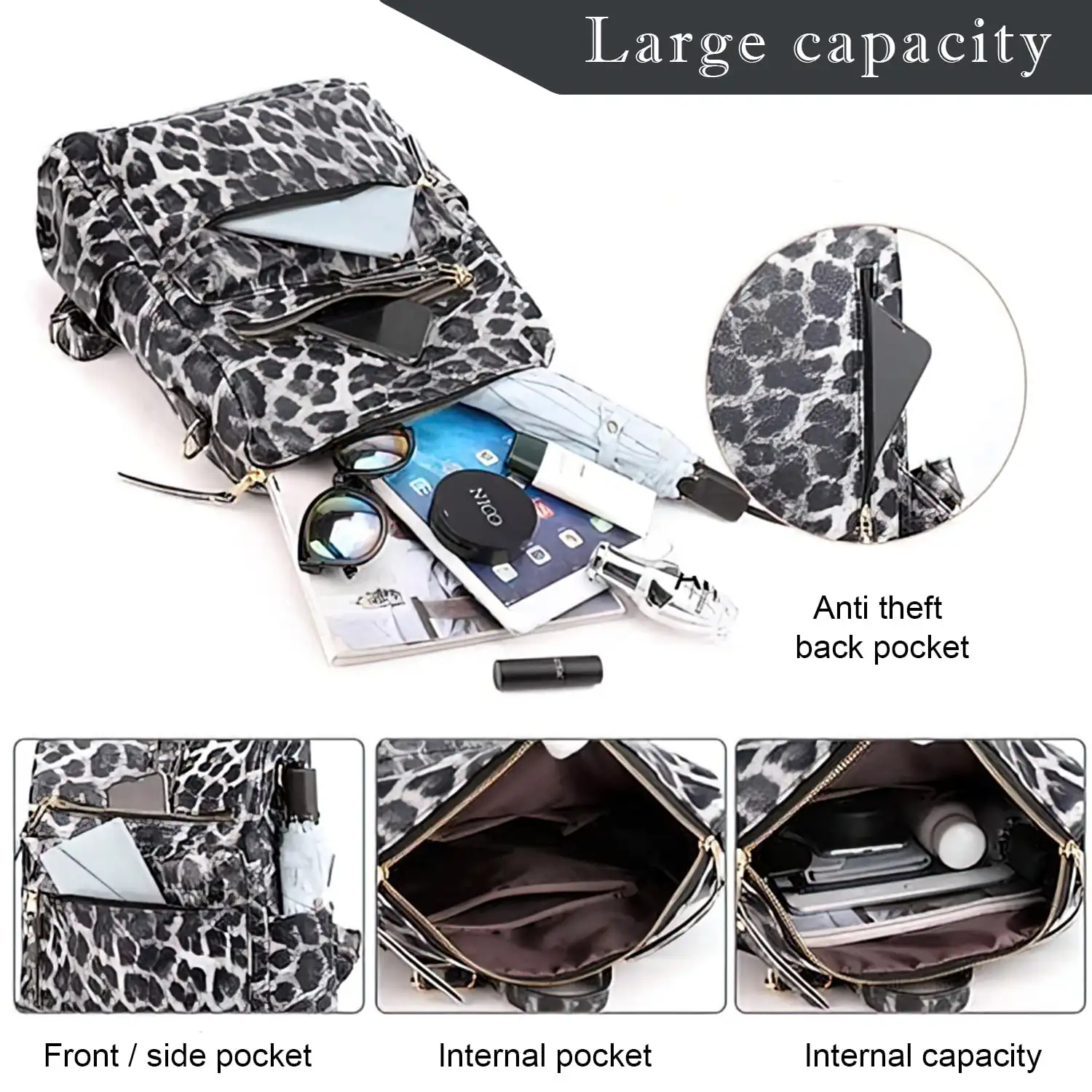
Top Grain Leather: Pros and Cons
Pros of Top Grain Leather
- More affordable – Lower price point makes quality leather more accessible
- Consistent appearance – Uniform look with fewer natural variations
- Better stain resistance – Surface treatments provide improved protection against stains
- Immediate softness – Typically supple and flexible from first use
- Wider color selection – Takes dyes and pigments more consistently for broader color options
- Lower maintenance – Requires less frequent conditioning than full grain
- Sleeker appearance – Refined look works well for fashion-forward designs
Cons of Top Grain Leather
- Reduced durability – Less resistant to wear and tear than full grain
- Limited or no patina – Doesn’t develop the same rich character over time
- Less breathable – Surface finishes reduce air permeability
- More artificial feel – Can have a less natural tactile experience
- Shorter lifespan – Typically wears out faster than full grain leather
- Surface wear issues – Finishes may crack or peel with age
- Less unique – More standardized appearance lacks individual character
For those seeking quality leather with more consistent appearance, choosing leather quality bags made from top grain can provide a good balance of aesthetics and performance.
Best Uses for Full Grain Leather
Full grain leather excels in applications where durability, character development, and long-term performance matter most:
- Investment pieces and heirlooms – Items meant to last for decades or be passed down
- Daily-use items – Wallets, belts, and bags that face constant handling and wear
- Professional gear – Briefcases, portfolios, and mens leather backpacks for business environments
- Outdoor and work equipment – Tool belts, work gloves, and boots that face harsh conditions
- Quality furniture – Sofas, chairs, and ottomans that benefit from increasing comfort and character
- Luggage and travel items – Duffel bags, suitcases, and travel accessories built for frequent use
- Traditional crafts – Saddles, holsters, and other items where heritage techniques matter
Full grain leather is ideal when the item needs to:
– Withstand years of regular use
– Develop character and comfort over time
– Age gracefully rather than simply wear out
– Provide excellent value despite higher initial cost
– Offer the authentic look and feel of premium leather
Best Uses for Top Grain Leather
Top grain leather is well-suited for applications where consistent appearance, initial softness, and moderate durability are priorities:
- Fashion accessories – Handbags, womens leather backpacks, and fashion-forward designs
- Automotive interiors – Car seats, steering wheel covers, and interior trim
- Furniture with specific aesthetic requirements – Pieces where consistent color and texture are essential
- Garments and apparel – Leather jackets, gloves, and other clothing items
- Commercial and hospitality settings – Restaurant seating, hotel furnishings, and other high-traffic commercial applications
- Budget-conscious quality items – Products where good quality is needed at more accessible price points
- Modern, sleek designs – Items where a uniform, contemporary appearance is desired
Top grain leather works best when:
– Consistent appearance matters more than unique character
– Initial softness is preferred over breaking-in period
– Moderate lifespan (5-10 years) is acceptable
– Stain resistance is a priority
– Budget constraints make full grain impractical
14 Inch Leather Laptop Backpack, Brown Leather Backpack, Men's Leather Backpack, Vintage Leather Backpack
Price range: $177.28 through $199.12 Select options This product has multiple variants. The options may be chosen on the product pageDesigner Men's Backpack, Men's Leather Laptop Backpack, Men's Leather Work Backpack
Price range: $158.04 through $160.04 Select options This product has multiple variants. The options may be chosen on the product pageDesigner Mini Backpack, Mini Leather Backpack, Small Leather Sling Backpack, Women's Leather Backpack
Price range: $95.76 through $98.80 Select options This product has multiple variants. The options may be chosen on the product pageDesigner Mini Backpack, Designer Women's Backpack, Mini Leather Backpack, Women's Leather Backpack
Price range: $135.92 through $137.64 Select options This product has multiple variants. The options may be chosen on the product page15 Inch Leather Laptop Backpack, Leather Briefcase Backpack
$332.96 Select options This product has multiple variants. The options may be chosen on the product page17 Inch Leather Laptop Backpack, Men's Leather Travel Backpack, Men's Leather Work Backpack
Price range: $106.28 through $143.88 Select options This product has multiple variants. The options may be chosen on the product page
How to Identify Full Grain vs Top Grain Leather
Learning to distinguish between full grain and top grain leather takes practice but can be done with careful observation:
Visual Inspection
- Look for natural markings – Full grain leather typically shows small scars, insect bites, and growth marks; top grain has these removed
- Check for visible pores – Full grain has visible pore patterns; top grain often has less visible or artificially uniform pores
- Examine the edges – Cut edges of full grain show consistent fiber density throughout; top grain may show a distinct coated surface layer
- Look at the back side – Full grain typically has a more natural appearance on the reverse side
Tactile Tests
- Feel the temperature response – Full grain warms quickly to body temperature; top grain often feels cooler longer
- Test the flexibility – New full grain is often stiffer; top grain is typically more immediately pliable
- Touch test for surface coating – Full grain feels more natural; top grain may feel slightly plastic or have a surface coating
Marketing Term Interpretation
- “Genuine Leather” – Usually not full grain; often a lower quality split leather
- “Real Leather” – Tells you nothing about the quality or type
- “Premium Leather” – Marketing term without specific meaning
- “100% Leather” – Indicates only that no synthetic materials are used, not the quality
Red Flags
- Perfectly uniform surface with absolutely no variations
- Very low price for what claims to be premium leather
- Extremely thin but still very rigid material
- Strong chemical smell that doesn’t fade
For commuters and professionals who need leather goods that will withstand daily use, understanding these identification methods helps in selecting durable leather backpacks.
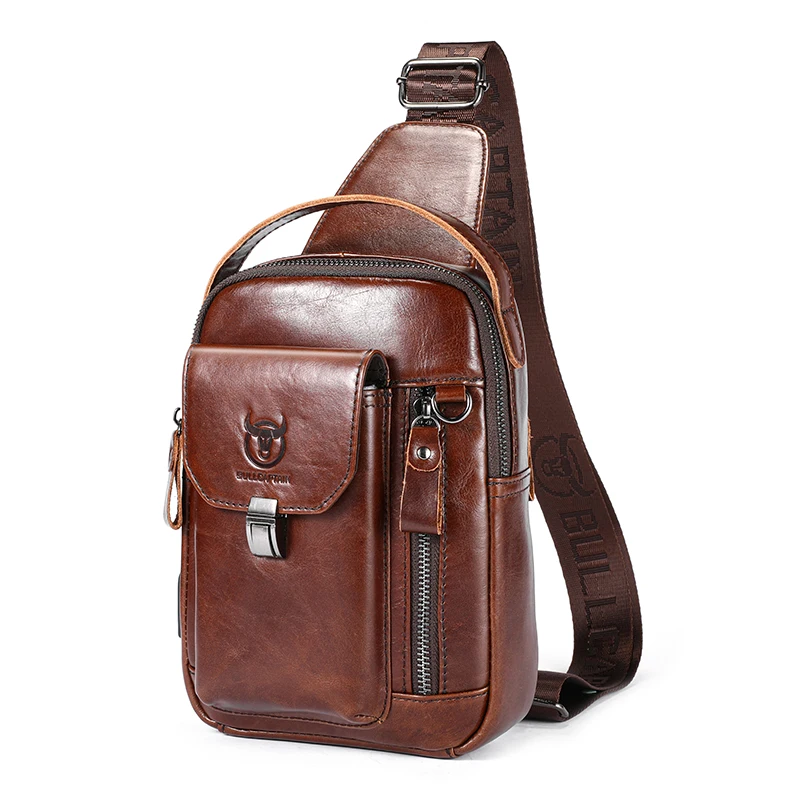
Leather Care: Maintaining Full Grain vs Top Grain
Proper maintenance is essential for maximizing the lifespan of any leather product, but the care requirements differ between full grain and top grain leather:
Full Grain Leather Care
- Regular conditioning – Every 3-6 months depending on use and climate
- Cleaning approach – Gentle, minimal soap, focus on preserving natural oils
- Stain handling – Address immediately but accept that some marks become part of the patina
- Storage – Well-ventilated area away from direct heat and sunlight
- Breaking in – May need more active use initially to develop softness
Full grain leather responds beautifully to proper care. Regular conditioning prevents drying and cracking while allowing the natural patina to develop. Though it requires more maintenance, the results are rewarding as the leather develops unique character over time.
Top Grain Leather Care
- Conditioning frequency – Every 6-12 months is typically sufficient
- Cleaning approach – Can use more specific leather cleaners designed for finished leathers
- Stain handling – Surface finishes provide better protection and easier cleaning
- Storage – Similar protection from heat and sunlight, but less sensitive to environmental changes
- Breaking in – Usually requires little to no breaking in period
The surface finishes on top grain leather provide some protection but can deteriorate if neglected. While top grain generally requires less maintenance, proper care is still important to prevent the protective finish from wearing away prematurely.
For both leather types, understanding proper leather backpack care and maintenance techniques will significantly extend the useful life of your investment.
Common Leather Myths and Misconceptions
The leather industry is filled with confusing terminology and misleading marketing. Here are some common myths debunked:
MYTH: “Genuine Leather” indicates high quality
FACT: “Genuine Leather” is actually a technical term for a specific lower grade of leather, not a mark of authenticity or quality. It’s often made from split leather layers with applied finishes.
MYTH: Leather is graded from 1-4 stars or grades
FACT: There is no universal standardized grading system for leather. Terms like “full grain” and “top grain” describe the part of the hide used, not a quality grade.
MYTH: Top grain is the best part of the hide
FACT: Despite the name suggesting superiority, top grain is actually second to full grain in quality. The name refers to it coming from the top layers, but with the outermost portion removed.
MYTH: “Corrected grain” and “top grain” are the same thing
FACT: Corrected grain is a subset of top grain that has been more heavily processed to remove flaws, often with embossed artificial grain patterns.
MYTH: Bonded leather is real leather
FACT: Bonded leather is more like particle board – made from shredded leather scraps mixed with adhesives and applied to a backing. It’s technically contains leather but has none of the durability or properties of real leather.
MYTH: Full grain leather is waterproof
FACT: While naturally more water-resistant than other leathers, no untreated leather is completely waterproof. Full grain can be treated for better water resistance but requires proper care.
MYTH: The softer the leather, the better the quality
FACT: Initial softness is not an indicator of quality. Many high-quality full grain leathers are firm when new and develop softness over time.
Understanding these distinctions helps consumers avoid being misled by creative marketing terminology.
Which Should You Choose? Decision Guidance
The choice between full grain and top grain leather depends on your specific needs, preferences, and circumstances:
Choose Full Grain Leather When:
- Long-term value matters most – You plan to use the item for many years
- You appreciate natural character – The uniqueness and natural markings appeal to you
- Patina development is desired – You value the way quality leather ages and tells a story
- Maximum durability is needed – The item will see heavy or frequent use
- You’re making an investment piece – The item is considered an heirloom or long-term investment
- Authenticity is important – You value traditional craftsmanship and natural materials
Choose Top Grain Leather When:
- Consistent appearance is priority – You prefer a uniform look without natural variations
- Budget constraints exist – You want good quality but at a more accessible price point
- Initial softness is important – You don’t want to wait for a break-in period
- Stain resistance matters – The item might be exposed to spills or stains
- Moderate lifespan is acceptable – A 5-10 year lifespan meets your needs
- Fashion-forward design is key – The item is more about current style than long-term use
For most consumers, the “better” choice comes down to personal priorities. If longevity and character development matter most, full grain is worth the premium. If consistent appearance and immediate softness at a lower price point are priorities, top grain offers excellent value.
Frequently Asked Questions
Is top grain real leather?
Yes, top grain is genuine leather made from the upper portion of the hide with the very top surface sanded away. It’s the second-highest quality leather available, after full grain.
Can you fix scratches on full grain leather?
Minor scratches on full grain leather can often be minimized with conditioning. Unlike damaged finishes on top grain leather, scratches on full grain tend to blend into the developing patina over time, becoming part of the leather’s character.
Is full grain leather waterproof?
No leather is naturally waterproof, but full grain has better natural water resistance than most leather types. With proper treatment and conditioning, it can become highly water-resistant, though not completely waterproof.
How long should quality leather last?
With proper care, full grain leather products can last 20+ years, with many lasting generations. Top grain leather typically lasts 5-15 years depending on use and care. Both significantly outperform lower quality leathers.
Why is some full grain leather more expensive than others?
Price variations in full grain leather come from factors including the animal source (cow, bison, goat, etc.), tanning method (vegetable vs. chrome), hide quality, thickness, and the reputation of the tannery.
Can top grain leather develop a patina?
Top grain leather develops limited patina compared to full grain. The surface processing and finishes reduce its ability to develop the rich patina that makes full grain leather so desirable over time.
What’s the difference between top grain and corrected grain?
Corrected grain is a subset of top grain leather that has undergone more intensive processing to remove flaws. It typically has an artificial grain pattern embossed onto the surface to replace the natural grain removed during processing.
How can you tell if leather is genuine full grain?
Look for visible natural markings, pore patterns, and variations in color and texture. Full grain leather should feel natural, not plastic-like, and should show some imperfections. The edges should show consistent fiber structure without obvious layering or coating.
